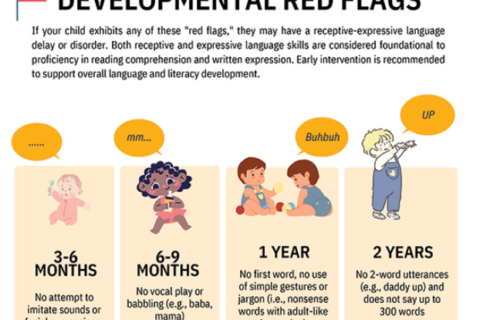Sign Language: How to Teach Your Baby to Communicate
Many people think sign language is only used by people who have hearing loss. The truth is teaching sign language at an early age – even as infants – is a great way to bolster your child’s ability to communicate by augmenting their understanding of words and providing a means for them to express themselves.
This blog will explore the basics of sign language and how you can incorporate this type of communication into your child’s life.
Why do Parents Use Sign Language?
Communicating verbally is a multiplex developmental skill. It involves understanding words and concepts and also requires significant fine motor control and coordination.
It takes time for young children to develop comprehension of early words and to acquire the motor speech maturity needed to talk.
Baby sign language is a research-founded method for supporting a child’s ability to both build their knowledge of early words and concepts and increase their ability to express wants and needs through use of simple gestures. Using baby signs both strengthens the understanding of words by pairing a label with a visual (i.e., a sign), AND requires far less complex movements than the movements required to speak.
Why Use Sign Language if Your Child is Not Hearing Impaired?
There are many benefits of introducing sign language to your child – even if they do not have hearing loss. Using baby signs:
- Reduces frustration by providing children with a means to communicate and express themselves
- Enhances comprehension of words and concepts by providing visual associations
- Supports development of verbal communication
How to Teach Your Baby Sign Language
When it comes to choosing the right signs for your baby, it’s important to choose words that focus on their interests/hobbies, daily routines, and words which will help them communicate their needs and wants.
Here are six things to consider when teaching your baby sign language:
- Context: Pair signs and words in real life contexts. For example, if you’re feeding your child and they cry or reach for more cheerios: use the sign/gesture for “more” while saying, “more cheerios?” and then pass them more cheerios. This helps your child associate the word “more” with its meaning and reinforces the fact that performing the action will (usually J) yield a desired result.
- Say the word and sign the word at the same time.
- Sign words close to your mouth to draw your child’s attention to the speech motor pattern used to say the word.
- Repeat! Children need repeated exposure and practice to perfect a skill. They will need a lot of repetition before they will begin signing and speaking by themselves! During mealtime, when your child reaches for more of something, say the word “more” and make the sign. The more exposure your child has to be able to understand and express themselves, the better!
- Start with hand-over-hand modeling to help children make the connection between the word and its sign/associated movement(s)/gesture(s). This supported practice will also help children learn how to perform movement sequences to request items and say yes or no to indicate desire. As they obtain more practice and gain independence, you can fade away support.
- Observe and respond to any attempts your child makes to engage and interact. Interactions and responses are the foundation of social communication.
What are Some Basic Signs for Babies?
Here are some foundational, high frequency words to help children communicate their needs and wants in daily routines. These are simply suggestions. We advise you to follow your child’s interests, needs, and routines to maximize neuroplasticity and cognitive-linguistic development.
- More: Bunch your hands so your fingers touch your thumb tap them together and pull them apart. Repeat.
- All done: Raise your hands to shoulder level with the palms turned in. Turn your hands so the palms face out. Repeat this movement.
- Water: Take your dominant hand and extend and separate the three middle fingers while holding the thumb and pinkie finger together.Then tap the side of your index finger on your chin a couple of times. To remember the sign, it is the ASL sign for ‘W’, going near your mouth.
- Eat: Bunch your hand and touch your mouth and repeat. Perform this sign during snack and mealtimes.
- Milk: Take your hand and make it into a fist. Relax your hand slightly and make another fist. Repeat as if you were milking a cow’s udder.
- Help: Make a fist with one hand, with the thumb extended, and place it over your other hand, which is extended flat with the palm facing up. Then move both hands up together.
- Please: With your fingers extended and held together and thumb extended and sticking out, take your dominant hand, place it on your chest with the palm facing in and make a circular motion.
- Stop: Extend the fingers of your dominant hand while keeping your non-dominant hand flat (palm facing up). Bring your dominant hand down to the palm of the non-dominant hand as if you were chopping an object.
- Up: Take your index finger and point upward to the sky. Raise and lower your hand several times.
- Hot: Make your hand into a claw shape and bring it to your mouth. Move your hand away from you, rotating it so your palm faces out and your fingers extend, almost as if you’re flicking your hand away.
- Cold: Make fists with both hands with thumbs up. Pull your upper arms into your sides, stiffen your forearms, and shake your fists to the center and outwards. Pair this sign with a facial expression of feeling cold and shivering.
When Can Babies Learn Sign Language?
Your child can learn sign language at any age! It is never too early or late to begin signing with your child. Typically, children between 6 to 9 months of age begin to imitate sounds and gestures. If your child is about that age or within the range, it is an ideal time to model and support the use of key signs to help them thrive within everyday routines.
Pediatric Speech Therapy at Open Lines®
While using baby sign language is a way to communicate with your infants, many parents still worry about children missing cognitive, speech, and language milestones. Concerns about this type of development can be quickly addressed by a consultation with a speech-language pathologist.
If you’re struggling with communication difficulties, it’s time to turn to Open Lines®. Contact us via phone (212-430-6800), email [email protected], or by filling out our convenient contact form. Improve your communication skills and unlock your potential with Open Lines® Speech and Communication in New York today!
Get in Touch With Open Lines®














